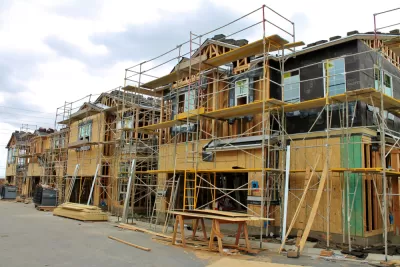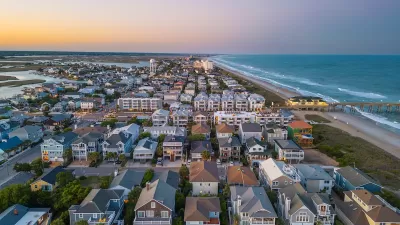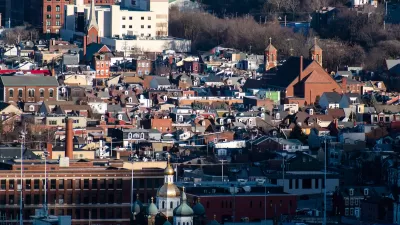Governor Newsom's new budget proposes incentives for developers to build housing in existing urban areas away from fire-prone zones to reduce fire risk and add to the state's insufficient housing stock.

A $2-billion package of grants and tax credits proposed in California Governor Newsom's budget would incentivize development in urban cores and steer housing construction away from areas facing high fire risks. The governor called it an effort to move development away from the "urban-wildland interface" where communities are routinely affected by California's increasingly destructive fires.
According to an article by Hannah Wiley, "The proposal would build on the $10.3 billion state officials allotted last year to bolster mixed- and low-income housing in California, but marks an evolution in the governor’s approach to solving the state’s multimillion-unit shortage" by specifically supporting infill housing projects in already developed areas.
The governor's top housing advisor said of the proposal "better for equity, it’s better for inclusion, it’s better for the environment." The Governor hopes the new language will encourage transit-oriented development and ease the cost and administrative burden of development on underused urban land and state-owned land that could be used for affordable housing, as well as reduce the cost of adaptive reuse that converts buildings to residential use.
The plan would reduce the encroachment of residential development into fire-prone areas and ease pressures on the state's mounting housing crisis by providing more incentives for dense, transit-oriented, affordable housing development.
FULL STORY: Newsom’s latest housing fix: More Californians living downtown

Alabama: Trump Terminates Settlements for Black Communities Harmed By Raw Sewage
Trump deemed the landmark civil rights agreement “illegal DEI and environmental justice policy.”

Study: Maui’s Plan to Convert Vacation Rentals to Long-Term Housing Could Cause Nearly $1 Billion Economic Loss
The plan would reduce visitor accommodation by 25% resulting in 1,900 jobs lost.

Why Should We Subsidize Public Transportation?
Many public transit agencies face financial stress due to rising costs, declining fare revenue, and declining subsidies. Transit advocates must provide a strong business case for increasing public transit funding.

Paris Bike Boom Leads to Steep Drop in Air Pollution
The French city’s air quality has improved dramatically in the past 20 years, coinciding with a growth in cycling.

Why Housing Costs More to Build in California Than in Texas
Hard costs like labor and materials combined with ‘soft’ costs such as permitting make building in the San Francisco Bay Area almost three times as costly as in Texas cities.

San Diego County Sees a Rise in Urban Coyotes
San Diego County experiences a rise in urban coyotes, as sightings become prevalent throughout its urban neighbourhoods and surrounding areas.
Urban Design for Planners 1: Software Tools
This six-course series explores essential urban design concepts using open source software and equips planners with the tools they need to participate fully in the urban design process.
Planning for Universal Design
Learn the tools for implementing Universal Design in planning regulations.
Smith Gee Studio
Alamo Area Metropolitan Planning Organization
City of Santa Clarita
Institute for Housing and Urban Development Studies (IHS)
City of Grandview
Harvard GSD Executive Education
Toledo-Lucas County Plan Commissions
Salt Lake City
NYU Wagner Graduate School of Public Service





























